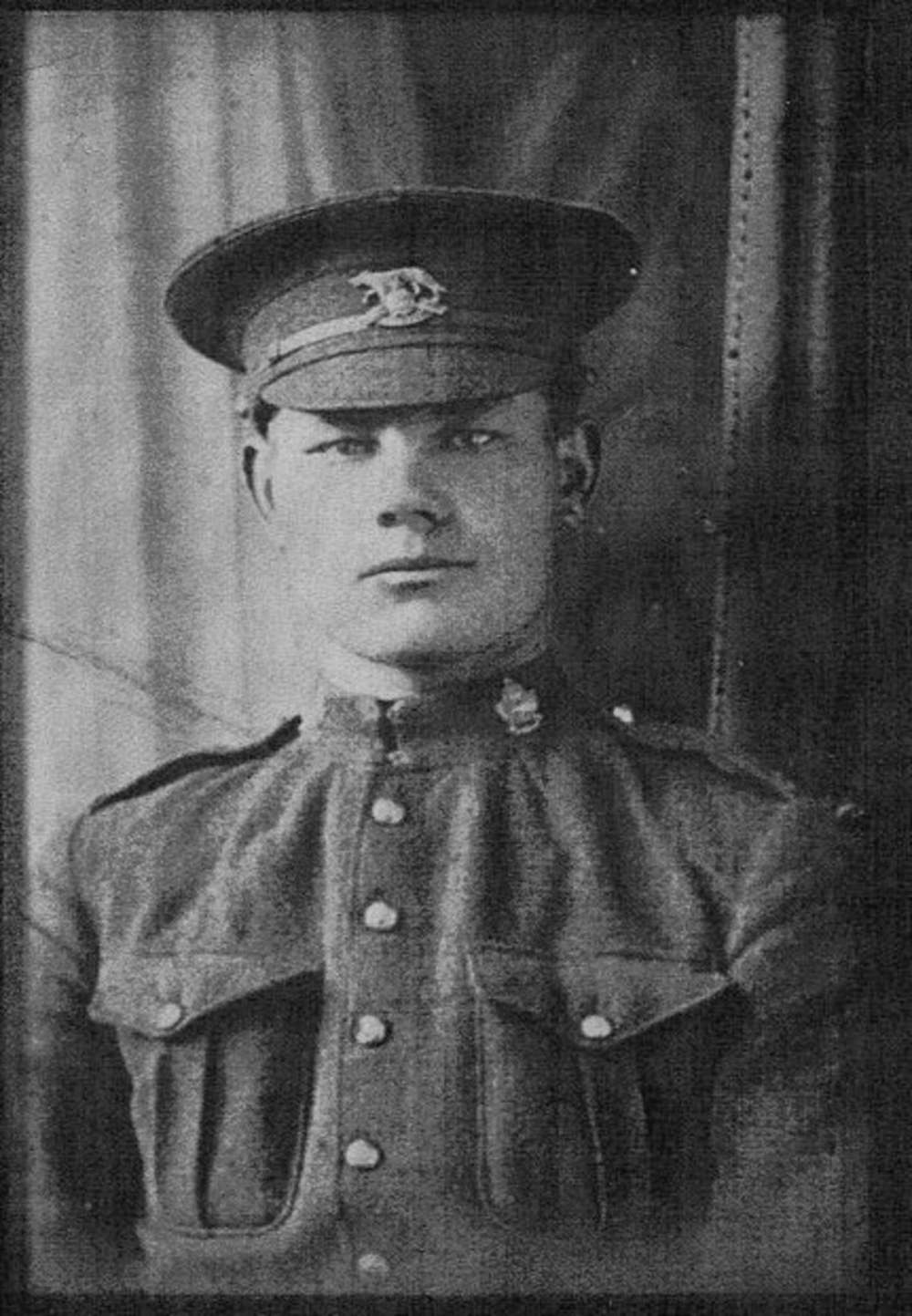Manitoba soldier to get burial, 100 years after death
Advertisement
Read this article for free:
or
Already have an account? Log in here »
To continue reading, please subscribe:
Monthly Digital Subscription
$19 $0 for the first 4 weeks*
- Enjoy unlimited reading on winnipegfreepress.com
- Read the E-Edition, our digital replica newspaper
- Access News Break, our award-winning app
- Play interactive puzzles
*No charge for 4 weeks then billed as $19 every four weeks (new subscribers and qualified returning subscribers only). Cancel anytime.
Read unlimited articles for free today:
or
Already have an account? Log in here »
Hey there, time traveller!
This article was published 16/08/2017 (2444 days ago), so information in it may no longer be current.
A Manitoba soldier killed in action during the First World War will be given a military burial Aug. 24 in France, just over three months since his remains were indentified and nearly 100 years to the day since he fell in battle.
Pte. Reginald Joseph Winfield Johnston of Fairford, Manitoba, will be laid to rest at Loos British Cemetery in Loos-en-Gohelle, according to the Department of National Defence.
The burial will be attended by representatives of the federal government and the Canadian Armed Forces, as well five of Johnston’s relatives.

Among the relatives present will be his great-niece Lorraine Leniuk, 80, who says his photo was always present on her grandmother’s wall when she was young. That photo, which captivated her as a child and as an adult led her to seek more information on her great uncle’s life, will be in her possession when she leaves for France Sunday.
“What a beautiful gift after one hundred years to bring closure to this family mystery. He won’t be forgotten,” said Leniuk, who lives in the RM of St. Andrews.
Born to a Métis family on Aug. 10, 1895, Johnston lived the majority of his life as a homesteader in Fairford, 220 kilometres north of Winnipeg, until he enlisted on Jan. 19, 1916 at the age of 20.
He was a member of the 16th Battalion, Canadian Expeditionary Force, which was a unit perpetuated by the Canadian Scottish Regiment (Princess Mary’s) of Victoria, B.C.
He took part in the first major action fought by the Canadian Corps under a Canadian commander in the war, which was known as the Battle of Hill 70.
Although the battle resulted in an Allied victory, significant casualties were suffered on both sides, with many deaths caused by heavy use of poison gas.
Johnston was killed in the battle, which was fought from Aug. 15-25, 1917, on either the first or second day of combat. He was 22 years old.
The strategic high point fought for during the battle remained in Allied control throughout the war.
Leniuk knew little about what happened to her great uncle all her life, until as an adult she began to search out whatever information she could find on his fate. In 2007, this search led her to visit the National War Memorial in Ottawa and the Canadian National Vimy Memorial in France.
Although she was able to scrape together bits and pieces of information, many details surrounding his death remained unknown.
It wasn’t until the spring of last year that she began to hope this family mystery may one day be solved, when she was approached to participate in the casualty identification program run by the Department of National Defence.
The program aims to identify the remains of unknown soldiers so they can be buried, in the presence of their family, by their regiment.
Leniuk’s DNA was taken and compared to the DNA recovered from remains found at a former munitions site in northwestern France in 2011, located about 100 kilometers inland from the English Channel. Also found at the site were artifacts associated with the Battle of Hill 70.
The remains were taken by the Commonwealth War Graves Commission and held at a facility in France as efforts to identify them got underway. Combining Leniuk’s DNA with historical context, material evidence and forensic anthropological analysis, they were able to confirm Johnston’s identity.
“It will be very humbling and I’ll be grateful,” said an emotional Leniuk, when asked what it will be like to attend the burial.
“He gave up his life for our beautiful country. I just want to say thank you for your sacrifice and for your service to our country. And I will have his picture, the one that I treasure from my grandmother’s wall. That will be with me.”
Sgt. Harold Wilfred Shaughnessy of St. Stephen, N.B., will also be buried that day. Shaughnessy was killed on the first day of the Battle of Hill 70 at the age of 33.
Veterans Affairs Canada has been providing both families with support as the burial arrangements have been made.
Around 2,100 Canadians lost their lives in the Battle of Hill 70 and an estimated 1,300 still have no known grave.
ryan.thorpe@freepress.mb.ca

Ryan Thorpe
Reporter
Ryan Thorpe likes the pace of daily news, the feeling of a broadsheet in his hands and the stress of never-ending deadlines hanging over his head.


